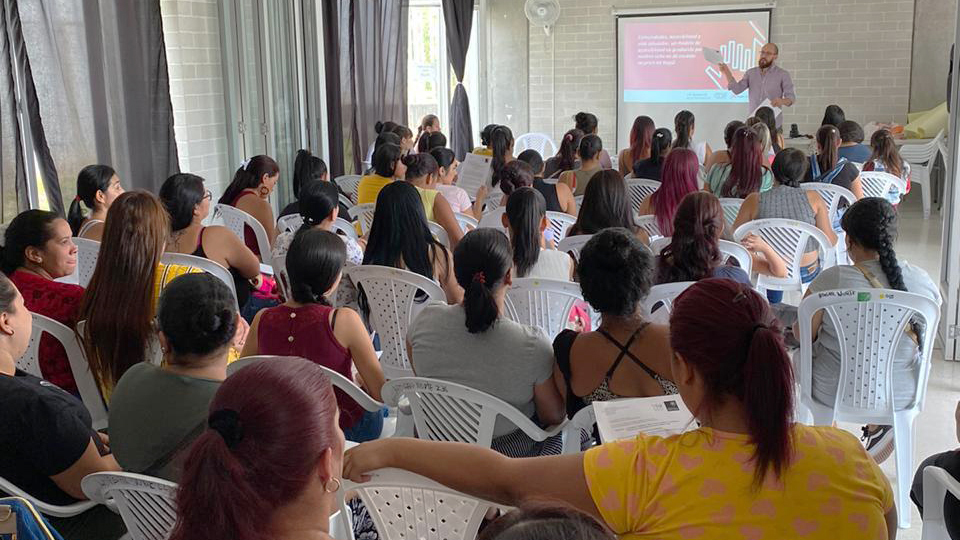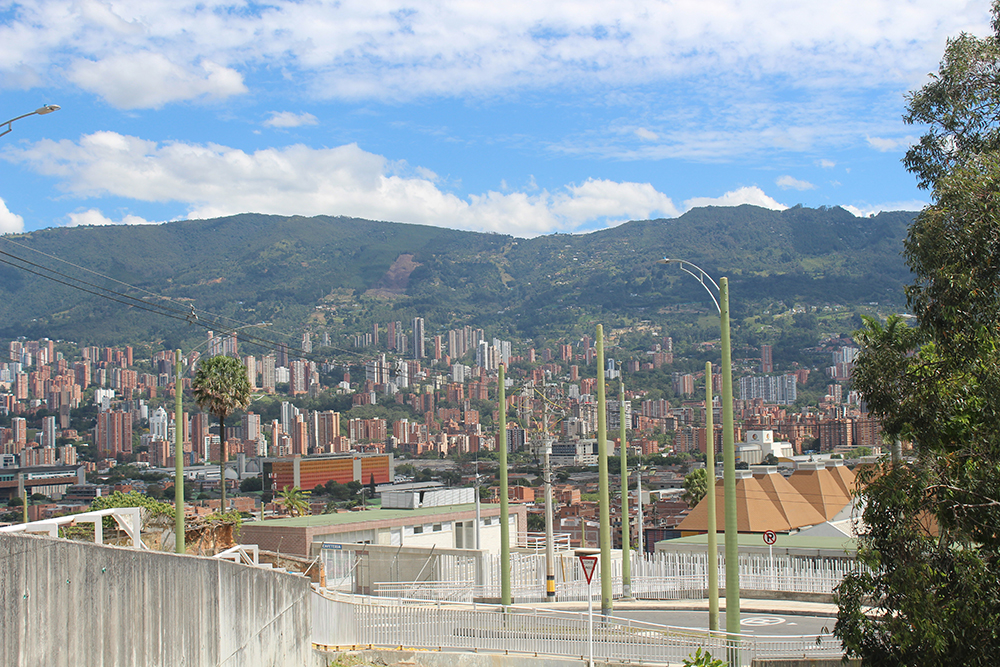Transport, gender and care roles: Lessons from Medellín in lockdown
The confluence of the health emergency from the COVID-19 pandemic and the new agreements coming out from Glasgow at COP26 place us at a decisive moment on how we want our cities to look like in the future. At no other time in history has it been clearer that transport infrastructures play an essential role in enabling us to care for our families, friends, and ourselves. As we start looking for strategies to reconnect our communities in the wake of COVID-19, and consider how to address the inevitable climate crisis, it is time we put care at the centre of transport's role in our societies.
Colombia had a nationwide lockdown between March and September 2020. During this time, PEAK researchers based at the University of Oxford's Transport Studies Unit (TSU) collected data on how the lockdown affected a group of 40 women living in a peripheral, low-income area of Itagüí, in the Medellín metropolitan area.

Our research has used both quantitative data from surveys and qualitative data from a four-month storytelling exercise. Preliminary analysis of the data points to three main findings: less travel can result in more care duties at home; a community's ability to deal with crises depends on multiple 'mobilities of care'; and so-called leisure trips play a key role in caring for ourselves. Creating resilient infrastructure for care trips will not only be key to prepare our cities for the climate disruptions to come but could be crucial in finding less carbon-intensive and equitable options to move around.
Less travel, more care duties
This first point is easy to relate to: as lockdowns were declared around the globe, many families needed to adjust their routine to care for family members who would normally be cared for by someone else (i.e., a day-care centre). In Colombia, as in most of the world, women are disproportionately charged with care responsibilities at home, so this change had very explicit gender bias and enhanced gender inequities. However, in Itagüí, we saw how the restrictions on mobility had many other consequences beyond childcare.
Many of the women in our group are unemployed or work in the informal economy in trades that depend on people moving around the city, such as selling snacks on the street or collecting recyclable waste. Their lack of means to earn a decent wage and save some money meant, of course, that the economic crisis that hit with the lockdown was felt from day one.
Some of them had to queue at 5:00am at a local warehouse to buy their groceries before they were out of stock by 7:00am. Some had space to plant their own vegetables and started doing so. According to their own narratives, this was done out of necessity, not choice. Others had to spend more time collecting water for their family due to an interrupted water service and needing more water to cook and clean. Add to this the need to help their children with their schoolwork from their smartphone, or help parents that live with them, and it is easy to see how the inability to travel for care-related trips resulted in full time caring responsibilities.
According to our data, on average, these women spent 70% of their time at home caring for other members of their household (excluding time sleeping).
Mobilities of care are essential to deal with crises
For the last decade or so, the concept of mobilities of care has been gaining importance in transport studies, after pioneering work by Sánchez de Madariaga (2013). According to her definition, mobility of care includes all travel resulting from home and care responsibilities such as household maintenance, visits to take care of the sick, or shopping for daily living. During the health and economic crisis due to COVID-19, the importance of these trips was highlighted.
Furthermore, our research shows how many trips that would not be classified under the common definition of care trips, such as trips for work, have an underlying motivation of care: the women in our group repeatedly mentioned how their main concern with not being able to work was because the sudden halt on income limits their capabilities to properly care for their household, their community, and even members of their family living abroad. Without being able to work they cannot pay for proper food, medicine, or shelter.
The mobilities of care go beyond family and sometimes without any expectation for reciprocity. Some of the women in our research group told us how they were now involved in distributing donated food to households in need, and how, in reaching some of these areas, they noticed how some elders had been left essentially alone to fend for themselves during the lockdown. The community organised for tables to be placed in public areas where people could donate and take food in case of need. Some others shared their grocery shopping with neighbours or migrants with no access to any form of government relief. These efforts were essential to the survival of the community and yet, there was minimal effort from local, metropolitan, or national governments to cultivate or capitalise on these networks.
According to our data, close to half of the women's' trips during lockdown had some relation with mobilities of care. Although they would originally classify some of these as personal errands or shopping, when asked for details of the nature of these they would clarify they were trips associated to taking their children or parents to doctors' appointments, buy groceries for the family, or bring food to a family in their neighbourhood.
Moving to care for ourselves
The role that mobility plays in mental health has been part of the COVID-19 lockdown discussions around the globe, and our research also points in this direction. Churches and places of worship were closed during most of 2020 but visits to these spaces were frequently mentioned by the women in our research group as the only time in the week where they could relax, take some time for themselves, and find some refuge from daily worries. Some used to take walks after sunset, but with emptier and darker streets in lockdown they did not feel safe to do so. Others mentioned how they missed going to a park and having an ice cream. These activities play an essential role in our mental health and should be explicitly recognised in our understanding of the relationship between mobility, health, and care.

Traditionally, walking around the city, going to church, or taking a trip to find a place of peace and quiet such as a park has been classified within leisure trips and explicitly excluded from definitions of mobilities of care. However, lockdowns have highlighted the role that these trips play in our mental health. Entire families and communities depend on the support these women offer during various crises but their opportunities to care for others will be restricted if they do not find places to care for themselves. The inclusion of self-care in the definition of mobilities of care can be a first step.
What next?
As vaccination programmes progress around the world, albeit slower in some countries than others, and we start feeling we can begin to reconnect our communities, it is important to recognise that we will face other crises ahead. Climate change will result in more frequent floods that will disrupt transport systems, and it is likely that we will face easily transmissible and deadly new diseases that call for physical distancing at various scales.
How can we learn from experiences during the COVID-19 pandemic and build transport systems that are better prepared for these challenges? Putting care centre stage in the discussion is a great place to start.
Juan Pablo Orjuela Mendoza is Senior Research Associate at the University of Oxford's Transport Studies Unit (TSU) and the new director of the TSU's Executive Education Programme 'Global Challenges in Transport'. This research is supported by the UKRI funded research project PEAK Urban (ES/P011055/1)
Transport, gender and care roles: Lessons from Medellín in lockdown
The confluence of the health emergency from the COVID-19 pandemic and the new agreements coming out from Glasgow at COP26 place us at a decisive moment on how we want our cities to look like in the future. At no other time in history has it been clearer that transport infrastructures play an essential role in enabling us to care for our families, friends, and ourselves. As we start looking for strategies to reconnect our communities in the wake of COVID-19, and consider how to address the inevitable climate crisis, it is time we put care at the centre of transport's role in our societies.

